

Editor’s Note: This is the ninth and final installment in our series about home gun safes. The series dives into detail about safe technology, mounting/hardening you safe, increased fire protection, specialty safes and higher-rated safes, and buying used safes. There is a lot of information to consider when buying a safe. Follow along with us as we take a deep dive into this subject.
SERIES:
- Part 1: Introduction to Gun Safes
- Part 2: Electronic/Biometric/Manual Locks
- Part 3: Anchoring Your Safe
- Part 4: Fireproofing Your Gun Safe
- Part 5: Understanding The Threats
- Part 6: Specialty Safes & Remodels
- Part 7: Quick-Access Safes
- Part 8: Buying & Selling Used Safes
- Part 9: Moisture, the Constant Battle
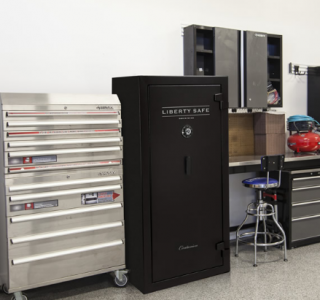
Where you locate your safe can add risks you may not have considered. Is your garage temperature controlled? If not, is high humidity a risk to your guns?
relative humidity noun
- The amount of water vapor in the air, expressed as a percentage of the maximum amount that the air could hold at the given temperature; the ratio of the actual water vapor pressure to the saturation vapor pressure.
If you ask most gun owners about humidity they will say it is bad for your guns. Yes, humidity can be bad for your guns. Too much and, oh yes, too little can be bad for your guns as well. So, to define the parameters of the battle, let’s consider the correct level of humidity.
Just Right
The NRA Firearms Museum recommendation is 65-70 degrees Fahrenheit, and 45% to 50% humidity. This should be a year-round constant, not an average. You could have an average of 50% humidity with 180 days of 0% humidity followed by 180 days of 100% humidity and still destroy your guns. Too much humidity, things will rust; too little humidity, and the wood stock on your rifle can actually dry out, crack and split.
Measure Twice, Cut Once
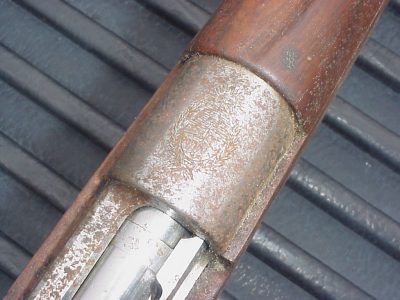
If you do not control the humidity levels in your gun safe, your precious collectibles can be damaged.
Just like the carpenter’s rule, the first thing here is to know the correct numbers. To get this I recommend buying two humidistats to monitor the humidity levels inside your safe. This will allow you to see if you need any humidity control. Now, why do I recommend two humidistats? This will allow you to check the reading against one another. Most of the retail models tend to be accurate at showing changes, but not an exact reading.
Once, you have your two humidistats you need to calibrate them (or get the error from a known measurement). This is not particularly difficult. To start the calibration process, you first need some iodized salt, distilled water, and a container. The container can be almost anything, so long as it has a flat bottom and can hold the salt and water mixture. Now, you need to measure a level teaspoon of salt and place it in a small container. Add enough water to the salt that it forms a paste. Do not add too much water, as this will skew your readings. Once you have made the paste, place both the humdistat (turned on, if digital) and the salt solution into the airtight container and seal it.
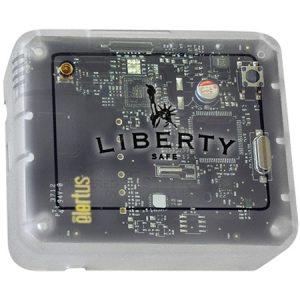
The Safelert from Liberty Safe allows you to remotely monitor your safe’s condition, including humidity levels.
Leave this alone for at least seven hours and do not disturb the container. After seven hours, check the reading on the humidistat. If it does not read 75%, then the difference between the reading and 75% is how much your device is out of calibration. Generally, your device should read between 73% and 77% humidity (+/- 2%). I then either turn the adjustment screw if the humidistat has one, or I write the error amount on the meter.
One other great product I recommend is the Safelert from Liberty. This connected device allows me to check the status of the door, battery life, temperature, humidity and Internet connectivity via my smart phone, email or text alert. You can read about it here and all the functions if offers.
Do I Have a Problem?
If you keep your house heated and cooled and control the humidity with an HVAC system you may not need to spend your money on humidity control. However, depending on where you live and where your safe is kept you may have a small issue to a full-scale war on your hands. The solution should be defined by the problem. It could be as simple as adding a humidifier or dehumidifier to your home and your whole house will be more comfortable as an added benefit.
Tools for the Battle
Dry rod dehumidifiers heat to a surface temperature of around 100-120 degrees Fahrenheit. The heat creates a natural convection that slowly circulates warm, dry air throughout the safe on a 24-hour basis. This increases the temperature of the air inside to several degrees above the ambient outside temperature. Expansion of the heated air forces the moist air outside through the small cracks on safe doors leaving the dry air inside. It works best when mounted horizontally at the bottom of the safe. Lowering the humidity is a slow process. If you do not see the reduction of humidity after a couple of weeks then you may want to consider a longer unit.
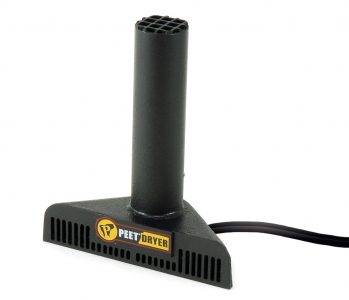
PEET Air-Circulating dehumidifier dries moisture inside the safe by raising the temperature inside the safe and circulating warm air.
An EVA-dry dehumidifier is filled with Water Glass Technology crystals that have a much higher absorption rate than traditional, desiccants. It is non-toxic and child and pet safe. You place the unit in your safe, and the silica gel crystals absorb the moisture in your safe. When the unit is full of moisture, the indicator window will turn green. Take the unit out and plug it in 8-10 hrs. The unit will renew itself and dry out the moisture. When the indicator window turns yellow put it back in your safe.
PEET Air-Circulating dehumidifier dries moisture inside the safe by raising the temperature inside the safe and circulating warm air. The warm air rises pushing the cold moist air down through the unit.
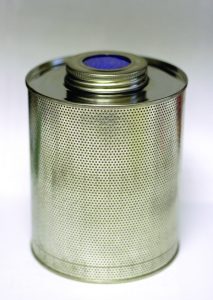
A Desiccant moisture absorber automatically absorbs humidity inside the safe. It is filled with silica.
Desiccant moisture absorber automatically absorbs humidity inside the safe. It is filled with silica, a material that actively absorbs moisture. Silica packs are often found in bags of beef jerky to keep the meat dry and free of moisture. You should place at least three silica packs in your gun case, but you need to ensure they are not touching any of your guns directly. Silica packs can cause the metal on your gun to rust if they come into direct contact. Simply heat in the oven to reactivate.
Light bulbs will warm the air and may get you the results you want. However, I have one caution for you to consider. Overexposure to light can be just as bad for some guns. Overexposure to excessive UV can cause fading of some materials like mother-of-pearl grips and case colors on metal components. You should keep light exposure below 25 foot-candles for sensitive materials. If you decide to use light I recommend modern LED bulbs as they don’t emit UV radiation. The correct amount of heat to control humidity will be a trial and error affair, but it can work.
Conclusion
So there you have it, some really good options for combating moisture in your gun safes. When we think of risks to our gun collections, most of us likely think of theft or fire. But the danger of moisture is real and should be taken seriously. The good news is that there are some relatively easy and low-cost ways to win this war.

These safes are busted open all the time! And the one with the digital keypad are just stupid easy to get in!! What it weighs has no bearing on how easy or hard it is to get in! A lot of time weight will help with leverage to get in a safe! All they do is keep an honest man out!!!
I do think that fort Knox is cool. If I went that way I would have at least 2 and put them in different rooms and BOLT THEM DOWN. you are right about mechanical locks! Do not get electronic safes/boxes.
Living in New Orleans means humidity is a constant battle. I have chosen an aggressive approach and am using a small electric dehumidifier operating on a timer. Petite dehumidifier ls are available on line for appx $35 and they have a reasonably small footprint. I operate mine for just a few hrs twice a day and then periodically empty the reservoir. With 90% humidity outside I have easily maintained 55% readings on my digital temperatures/humidity meter.i feel more secure removing as much moisture as possible but I do also have a heating rod. Better safe than sorry.
An POSSIBLE alternative way to keep rust away in an safe that has worked for me more than 20 years is to buy for lond guns silicone treated sleeves and keep them in the safe, for handguns I use the purple bags that Crown Royal comes in. Before putting the guns in the bag I oil them with an cloth sprayed with Balistol or an similar lube. I live in an fairly humid place and NEVER have rust in my safe!
I love crown royal!….used to buy it in Canada for 20 dollars ….it was selling for 50 dollars in the states…..Now i have a new use for those darn bags. thanks for the tip!
I can see ordinary incandescent light bulbs as a heat source which will raise temperature and dry out the interior of a safe. Did not know about their UV rays potentially harming your weapons, but they would work equally well shielded by an opaque object such as a steel can. My concern is that LED lights will emit far less of their energy as heat, and might not be the good choice for this purpose.
It’s old technology, but I would be more confident of a 7.5W incandescent bulb than a 7.5W LED type which claims approximately 40W light equivalency. There are certainly things I don’t know, but I see heat as the goal here and the old technology produces much more of that.
I’m not a duty expert on the gizmo side of safe storage verses humidity but I know what has worked for me for over 40 years, is simple and no power requirement. First step is to use RIG (TM). Buy it as a kit with the grease and sheep skin applicator. Apply sparingly on the wooly side, rub it against itself to spread it out within the wool (just add more as needed, never wash it out). Apply a thin coat to all metal surfaces. You can buy RIG grease refills without the skin.
Second step is use DampRid. I don’t use the large kit as it takes up too much horizontal space. The regular kit comes with a black slit vented container to hold the DampRid and a slightly larger clear container to rest it in and be a reservior/trap for collected water. I actually replaced the clear container with a larger volume vertical container that fit tightly. I can leave it 6-8 weeks without collected water reaching the bottom of the black container, it will collect 2+ pints of water during that time, I live in Fl! Dump collected water and clear scale (by product looks like sheet ice) from reservoir, no need to dump old DampRid, just top off.
Thats it, simple and cheap. You still need to do your normal periodic firearm inspections and lube internals/bore and reapply RIG as needed.
40 years: NO Rust,